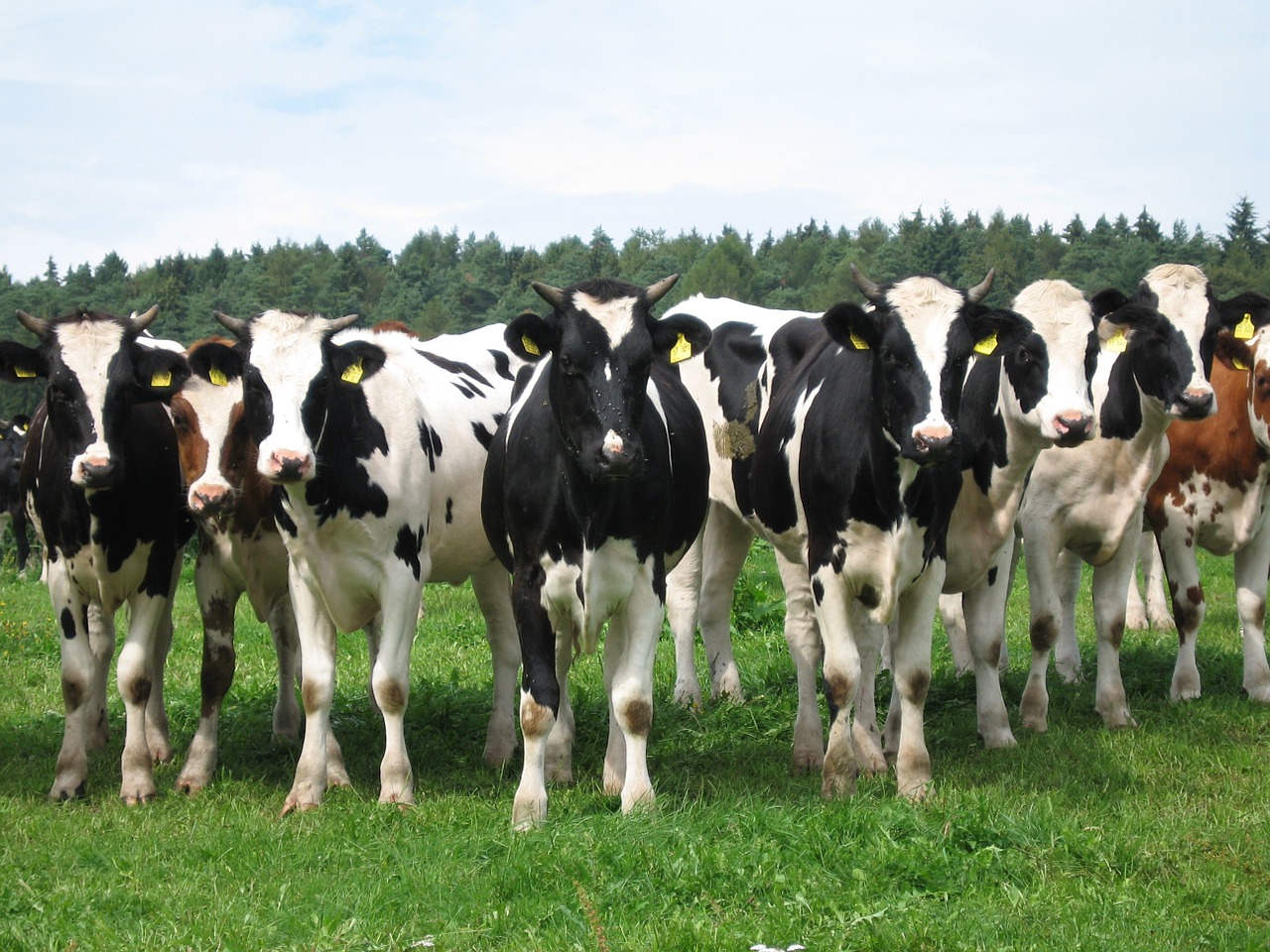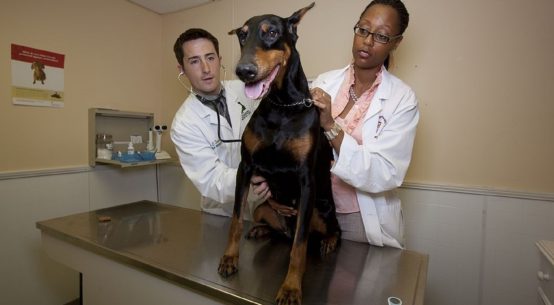
Large animal veterinarians specialize in providing health care for livestock species that are commonly kept on farms. Their patients often include dairy cattle, beef cattle, horses, hogs, sheep, and goats.
Duties
Large animal veterinarians are licensed practitioners who specialize in the diagnosis and treatment of the illnesses and injuries that affect livestock species. Most livestock vets travel to farms and ranches to visit their patients, operating out of a customized truck equipped with medical equipment. Some large animal vets are based in animal hospitals, especially if they primary do surgical work (i.e. large animal teaching hospitals at veterinary colleges or equine hospitals). Others choose to combine mobile and clinical work, being based out of a clinic but spending much of their time on farm calls.
Large animal vets are responsible for many preventive herd health tasks such as performing general health exams, conducting pre-purchase evaluations, administering routine vaccinations, confirming and monitoring pregnancies, giving breeding soundness exams, and conducting diagnostic tests. They also perform emergency functions such as assisting with dystocia cases (problem births), cleaning and suturing lacerations, performing surgery, applying splints or casts, and taking ultrasounds or x-rays on animals in distress.
As is quite common in the veterinary profession, most large animal vets work long hours (including “on call” duties for emergencies occurring on weekends and holidays). They tend to be constantly on the go as they travel from one farm to the next. The work can be physically strenuous and there is always the risk of injury from working with large and unpredictable animals that are under stress.
Employment Options
While many large animal vets work on several different livestock species, some elect to focus exclusively on treating one species (like horses or cattle). Others choose to open a mixed practice that treats both large and small animal patients.
Outside of private practice, large animal veterinarians may find employment in academia, in veterinary pharmaceutical development or sales, in the military, in research facilities, with the U.S. government (at the FDA, USDA, or other agencies), in livestock feed development, in medical device sales, and more.
Education, Training, and Certification
All large animal veterinarians must complete a Doctor of Veterinary Medicine degree to be eligible to practice medicine. DVM programs cover multiple species in great detail (both small and large animal) through rigorous coursework and clinical training. There are 30 AVMA accredited colleges of veterinary medicine in the United States, and according to the Association of American Veterinary Medical Colleges (AAVMC) approximately 3,000 new veterinarians enter practice each year. After successfully completing a DVM degree, new vets must pass the North American Veterinary Licensing Exam (NAVLE) to be eligible for licensing in the state where they intend to practice.
Large animal veterinarians may also go on to seek specialty board certification in one of several large animal related areas. The 2015 AVMA Market Statistics on board certified vets found that there were 561 large animal internal medicine diplomates, 307 large animal veterinary surgeon diplomates, and 107 equine practice diplomates.
Professional Associations
Large animal veterinarians may be members of many different veterinary organizations including the American Veterinary Medical Association (AMVA), the American Association of Bovine Practitioners (AABP), the American Association of Equine Practitioners (AAEP), the American Association of Small Ruminant Practitioners (AASRP), and the American Association of Swine Veterinarians (AASV).
Salary Range
The Bureau of Labor Statistics (BLS) reported that the median pay for veterinarians was $88,490 per year ($42.54 per hour). The survey showed the lowest paid ten percent of veterinarians were bringing in less than $53,210 annually, while the highest paid ten percent of veterinarians were bringing in more than $158,260 annually. The BLS doesn’t offer niche salary information for the various areas of veterinary specialization.
According to AVMA research, food animal exclusive veterinarians earned a median salary of $103,000 in 2009. Food animal predominant veterinarians also earned a strong median salary of $91,000. Veterinarians who are board certified often earn significantly higher salaries as a result of their proven expertise.
First year salary for food animal exclusive veterinarians is the highest among all types of practice, which may be a surprise to some. Food animal exclusive practitioners earn $76,040 in their first year, while food animal predominant practitioners earn $66,660 in their first year. For comparative purposes, companion animal exclusive practitioners have first year earnings of $69,712 and companion animal predominant practitioners have first year earnings of $67,631.
Job Prospects
Statistics from the American Veterinary Medical Association (AVMA) show that most U.S. veterinarians work in small animal private practice (44,936 in companion animal exclusive practice and 6,603 in companion animal predominant practice according to 2015 data). Comparatively, there are just 3,655 vets working in food animal predominant practice and 1,969 vets working in food animal exclusive practice. This is an extremely imbalanced ratio of small animal to large animal practitioners.
There is a particularly strong demand for large animal veterinarians in a number of underserved areas—so much so that the U.S. government has created scholarship opportunities like the Veterinary Medical Loan Repayment Program (VMLRP) that are designed to attract large animal veterinarians to those areas.
The BLS projects that the veterinary profession will grow at a rate of about 9 percent from 2014 to 2024, a bit faster than the average for all professions they monitor. The limited number students choosing to practice large animal veterinarians should ensure strong demand for large animal practitioners will continue for the foreseeable future, particularly in underserved rural areas.
Follow Animal Career Expert on Facebook, Twitter, and Pinterest for the latest articles, photos, and news.


